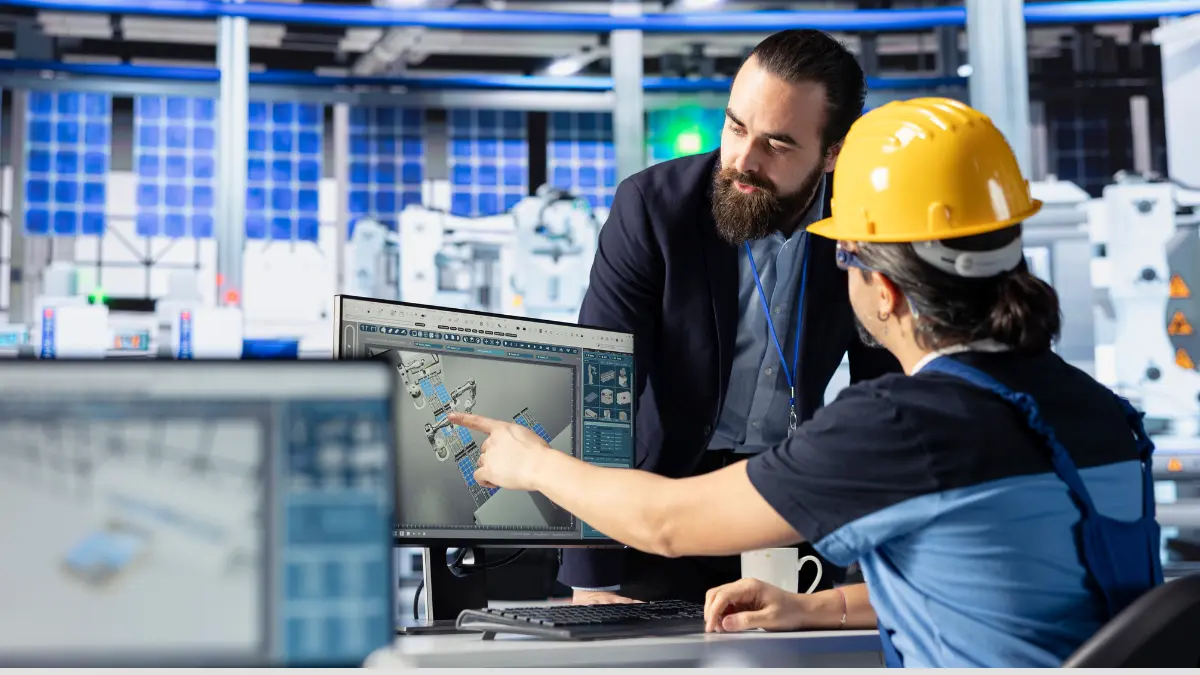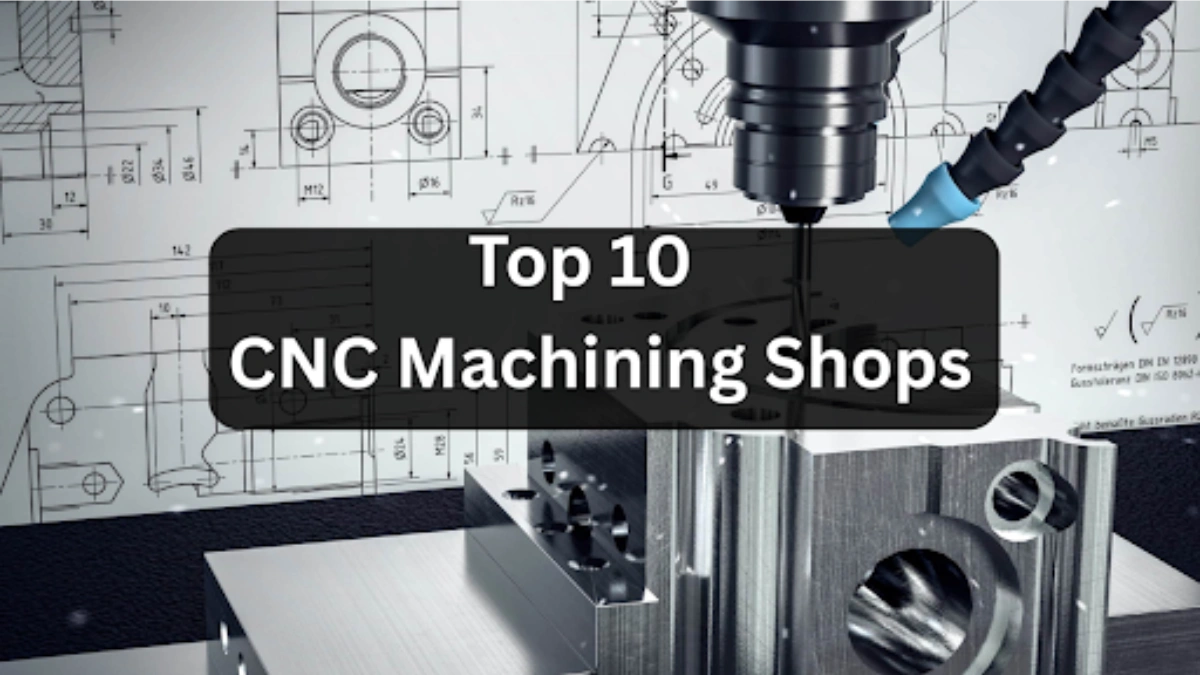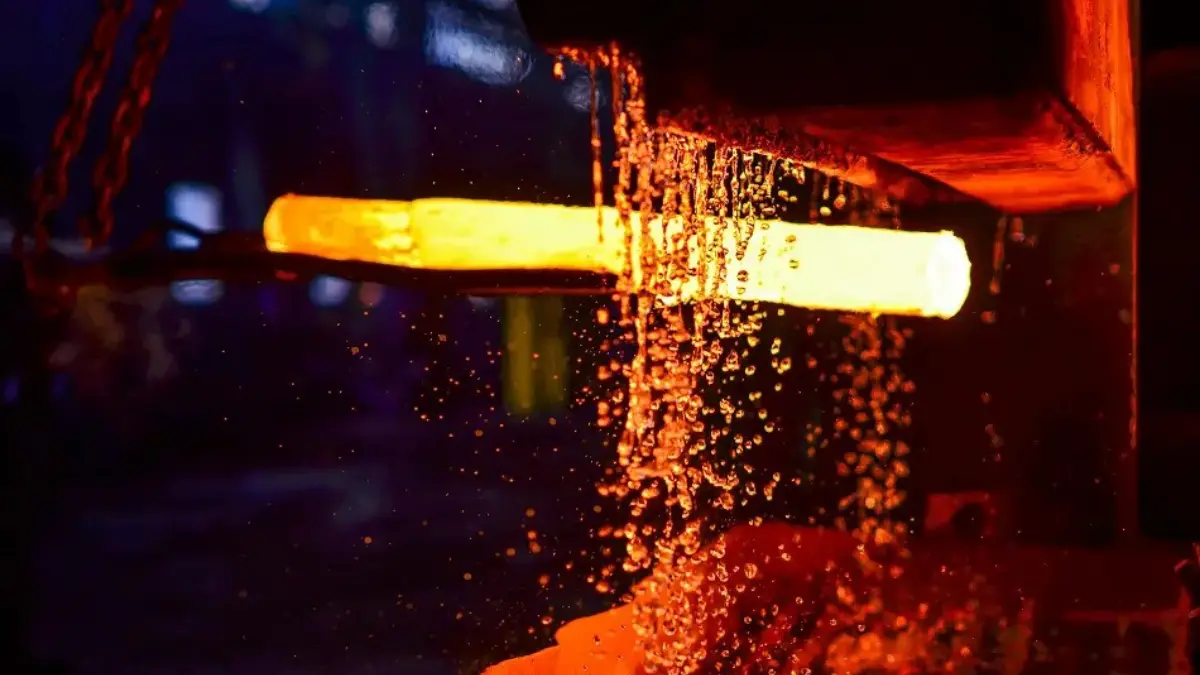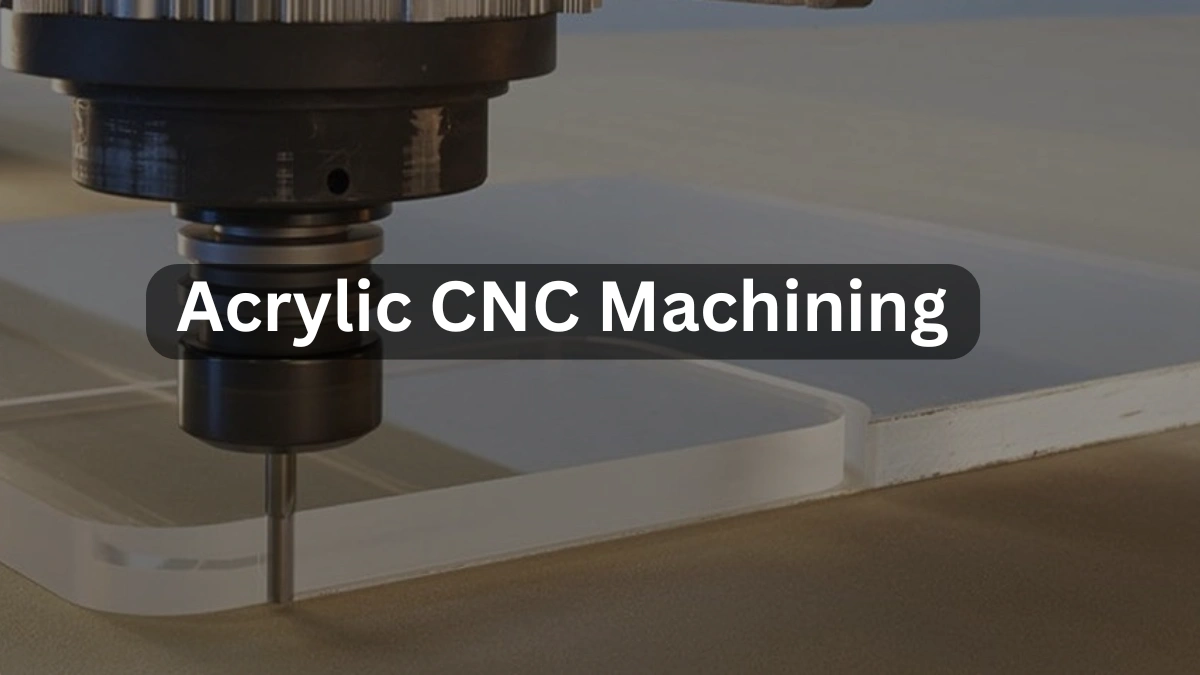Custom manufacturing is a process in which CNC machining creates unique parts. It uses computer-controlled milling and turning machines. This process makes specific custom designs for customers.
In custom parts manufacturing CNC machining companies integrate Industry 4.0 technologies with advanced materials science. Modern machining shops are capable of achieving part tolerances of ±0.0001.
Key Takeaways of the article:
- Custom Manufacturing Definition
- How it is different from mass production?
- Core Process in Custom Manufacturing
- Custom Manufacturing Process Comparison
What Is Custom Manufacturing?
Definition & Scope
Custom manufacturing is reliable and easy way to make your own models with distinctive identity. It encompasses build-to-order (BTO) parts production that is the big upgrade. Basically, custom designed parts are made via adaptive manufacturing cells.
These systems are rigid and utilize modular tooling and quick-change fixtures to match precision with personalization. Advanced manufacturing technology utilizes machine learning algorithms, creating parts just in time with specified cutting parameters.
The scope of custom manufacturing excellence extends beyond simple part production, perpetuating the customer’s preference or taste. It includes design optimization, material selection, and process validation through statistical process control (SPC).
Market Drivers
The demand for customized products grows at 15% annually across industrial sectors. Plus, digital twin technology enables virtual prototyping before physical production. Smart manufacturing reduces setup times from hours to minutes through automated tool changers and predictive maintenance systems.
Consumer expectations make strides in mass customization trends, diluting copy-and-paste commodities. IoT sensors enable real-time production monitoring and quality feedback loops.
Custom Manufacturing vs. Mass Production
Flexibility vs. Scale
Custom manufacturing and mass production rely on dedicated equipment and fixed tooling. Industry-leading manufacturing experts use flexible manufacturing systems (FMS) with adaptive control. You will see how programmable automation controllers (PACs) make a swift changeover between different part families.
Modern CNC machining centers feature automatic pallet changers and tool magazines with 200+ tool positions. This flexibility allows processing diverse geometries without manual intervention.
Cost Implications
Traditional cost models favor high-volume production runs. Manufacturing cost estimates for custom achieve parity through reduced setup times and elimination of tooling costs. In the meantime, per-piece costs may be higher. However, total project costs often decrease due to the elimination of inventory carrying costs.
Activity-based costing (ABC) reveals hidden expenses as mass production involves production lines with specialized machinery. Storage, handling, and obsolescence costs can exceed 25% of product value.
Inventory & Waste Management
Lean manufacturing principles minimize work-in-progress (WIP) inventory. Just-in-time manufacturing reduces inventory in a custom manufacturing operation from quarterly to weekly cycles. This point is noticeable when comparing cash flow improvements and facility space utilization.
Advanced MRP systems integrate with CAD databases for automatic material requirements planning. Subsequently, material waste decreases by 30-40% through optimized nesting algorithms.
Benefits of Custom Manufacturing
Enhanced Quality & Precision
High-precision manufacturing employs closed-loop feedback systems for custom designing a product. Laser interferometry measures machine positioning to nanometer accuracy. CNC machining companies achieve Cpk values exceeding 2.0 through statistical process monitoring.
Also, In-process gauging systems automatically adjust cutting parameters when dimensional drift occurs. Adaptive control handles the quality aspect with consistency throughout production runs.
Cost Efficiency
In simple words, customize machines for their operation lines slows down traditional cost penalties through advanced planning systems. Manufacturing execution systems (MES) optimize resource allocation plus cut idle time.
Build-to-order (BTO) parts production significantly lowers inventory investment by 60-80%. Project management software in custom manufacturing eliminates paper-based systems and reduces administrative overhead.
Faster Lead Times
Rapid prototyping incorporates multiple technologies simultaneously. Stereolithography creates concept models while direct metal laser sintering produces functional prototypes. You know, parallel processing reduces development cycles from weeks to days.
Lights-out manufacturing operates 24/7 for custom projects without needing an operator. Additionally, automated part loading and unloading systems handle ceaseless operation.
Flexibility & Scalability
Flexible production models adapt to demand fluctuations without capacity penalties. One-off manufacturing gradually scales up low-volume production through modular system design. This point is important because it enables the economic production of custom metal fabrication. That ranges from single prototypes to 10,000+ units.
Scalability depends on manufacturing cell reconfiguration rather than equipment replacement. Modular fixturing systems accommodate part families with minimal changeover time.
Core Process #1: CNC Machining
Overview of CNC Machining
Custom CNC machining entails computer numerical control with advanced cutting tool technology. It allows the production of similar replicas repeatedly. Modern systems employ 32-bit processors running at 1GHz+ speeds for real-time trajectory calculations without plunging quality. CNC machinists know this processing power enables complex 5-axis simultaneous machining operations.
High-speed machining techniques achieve material removal rates exceeding 1000 cubic inches per minute. Spindle speeds reach 60,000 RPM with ceramic ball bearings and magnetic levitation systems.
Key Strengths for Custom Work
Subtractive manufacturing excels at achieving surface finishes of Ra 0.1 micrometers or better. Tool path optimization algorithms minimize tool marks and chatter vibrations. Furthermore, adaptive feedrate control maintains consistent chip loads regardless of cutting conditions.
Manufacturers of custom products of metals and plastics utilize multi-axis machining for complex geometries. Simultaneous 5-axis interpolation cuts secondary operations and improves accuracy through single-setup machining.
Typical Applications
Custom manufacturing prioritizes the required material like Inconel 718 and titanium alloys, for aerospace parts. Indeed, these superalloys demand specialized cutting tools with PVD coatings and optimized geometries. Particularly, custom metal part fabrication achieves stress relief through controlled cutting forces and thermal management.
Medical departments reflect on a responsive manufacturing ecosystem. Thereby, they employ biocompatible materials like:
- medical-grade stainless steel
- PEEK polymers
Surface roughness specifications often require Ra values below 0.05 micrometers for blood-contact applications.
Core Process #2: CNC Milling
Overview of CNC Milling
CNC milling employs indexable carbide inserts with engineered chip breakers to tailor the manufacturing process. Manufacturing data analytics fixes tool geometries for specific materials and cutting conditions. Well, it is essential to understand that modern milling centers use through-spindle coolant delivery at pressures exceeding 1000 PSI.
High-efficiency milling (HEM) techniques let the tools constantly engage through trochoidal tool paths. This approach reduces cutting forces while maximizing material removal rates.
Core Capabilities
5-axis milling slows down the need for multiple setups using compound angle machining. Simultaneously, continuous 5-axis interpolation supports optimal tool orientation while fabricating custom-designed products.
Tool life monitoring systems in custom machine-built use acoustic emission sensors and power draw analysis. Predictive algorithms schedule tool changes before failure occurs, maintaining dimensional accuracy.
Use Cases & Examples
Aerospace commodities essentially need thin-walled structures with wall thicknesses below 0.030″. Adaptive control systems prevent part deflection through real-time force monitoring. Notice things like resonant frequency analysis to avoid chatter-inducing spindle speeds.
Complex mold cavities benefit from high-speed finishing passes with ball-end mills. Surface speeds can exceed 3000 surface feet per minute with proper tool coatings and coolant management.
Core Process #3: CNC Turning
Overview of CNC Turning
CNC turning achieves spindle speeds exceeding 12,000 RPM for small-diameter work and to meet the most stringent requirements. Bar-fed lathes process continuous stock with automatic cutoff operations. Multi-turret configurations enable simultaneous machining operations on opposite ends of workpieces.
Live tooling capabilities add milling operations within turning centers, machining complex patterns and shapes. C-axis interpolation enables complex helical geometries and off-center hole patterns.
Ideal Applications
Precision shaft manufacturing maintains straightness tolerances of 0.0001″ per inch of length. Swiss-type lathes support long, slender parts through guide bushing systems. Since these machines maintain close part support, they achieve length-to-diameter ratios exceeding 20:1.
Threading operations produce accurate pitch diameters through electronic lead screw control. Thread pitch accuracy maintains tolerances within ±0.0002″ over extended lengths.
Production Advantages
CNC turning provides superior surface finishes through optimized insert geometries and cutting speeds. Definitely, it is obvious that ceramic inserts enable machining of hardened materials above 60 HRC without pre-heating.
Chip-to-chip time reduction through rapid traverse rates and optimized tool indexing. Modern lathes achieve non-cutting time reductions of 40-50% compared to older machines, even tackling difficult-to-machine exotic alloys (Invar and Inconel).
Additive Manufacturing (3D Printing)
Overview of Additive Methods
Custom manufacturing fosters innovation like additive manufacturing. It builds parts through layer-by-layer material deposition. These layer thickness actually ranges from 0.025mm to 0.3mm, depending on technology and application requirements.
Process parameters critically affect part quality. Laser power, scan speed, and hatch spacing require optimization for each material and geometry combination.
Common 3D Printing Technologies
In custom and on-demand manufacturing, fused deposition modeling (FDM) and fused filament fabrication achieve build volumes up to 1000mm³. Heated chambers maintain parallel temperatures for dimensional stability of engineering plastics.
Stereolithography
Stereolithography (SLA) makes use of 405nm laser diodes with spot sizes below 0.1mm. Build platform accuracy maintains ±0.025mm positioning across the entire build envelope.
Selective laser sintering
Selective laser sintering (SLS) processes nylon powders without support structures. Powder bed temperatures get precise thermal profiles by practicing closed-loop control systems.
Direct metal laser sintering
Direct metal laser sintering (DMLS) achieves density levels surpassing 99% of wrought material properties. Argon atmosphere avoids oxidation during high-temperature processing.
Selective laser melting
Selective laser melting (SLM) has the capacity to turn parts into definitively dense, custom-shaped metal suitable for structural applications. Post-processing heat treatment blatantly improves mechanical properties and relieves residual stresses.
Multi-jet fusion
Multi-jet fusion (MJF) takes advantage of thermal inkjet printheads for selective heating. Build rates exceed traditional powder bed technologies through parallel processing of entire layers.
Electron beam melting
Electron beam melting (EBM) operates in vacuum environments at elevated temperatures. Titanium alloy processing gets attributes utterly equivalent to forged materials.
Binder jetting
Binder jetting separates printing and sintering operations. Green parts undergo furnace processing to achieve final density and mechanical properties.
When to Use Additive vs. Subtractive Manufacturing
Custom fabrication shop uses Additive manufacturing because of its internal cooling channels and lattice structures impossible with traditional machining. Geometric complexity adds no manufacturing cost penalty.
Subtractive manufacturing provides superior surface finishes and dimensional accuracy. Machined surfaces achieve Ra values an order of magnitude better than as-printed surfaces.
Types of Custom Manufacturing
Subtractive Manufacturing
Subtractive processes include conventional and non-conventional methods. Plasma cutting encourages the use of ionized gas streams at temperatures exceeding 20,000°F. Basically, cut quality depends on gas selection, amperage, and cutting speed optimization.
Water jet cutting at least has the ultra-high pressure water (90,000+ PSI) mixed with abrasive particles. Kerf widths remain constant throughout material thickness. It stems taper typical of thermal cutting processes.
Electric discharge machining (EDM) removes material through controlled electrical discharges. The fact that surface integrity remains unaffected by heat-affected zones, common in thermal processes.
Additive Manufacturing
An important thing to learn about is that layer adhesion strength varies significantly between printing orientations. Printing without any redesign doesn’t work unless you want to spend triple the print time (or more). In custom manufacturing solutions, part orientation optimization considers both surface quality and mechanical property requirements.
Support structure design affects both part quality and post-processing requirements. Soluble supports cut down manual removal operations, but compatible material systems are necessary.
Hybrid Manufacturing
Custom manufacturing software combines hybrid systems alongside additive deposition as well as subtractive finishing operations. The next thing is understanding how this approach optimizes both geometric complexity and surface quality requirements.
Near-net-shape additive processes cut back machining stock while getting the accuracy based on personalized demand. Material deposition rates can surge to 20 pounds per hour for large structural components.
Custom Manufacturing Materials
Metals
Stainless metal fabrication encompasses austenitic, ferritic, and martensitic grades. 316L stainless steel provides superior corrosion resistance through molybdenum additions. Machining parameters require optimization for work-hardening characteristics.
Aluminum alloys range from 1000-series pure aluminum to 7000-series aerospace grades. 7075-T6 achieves ultimate tensile strengths exceeding 80,000 PSI but requires specialized cutting tools and coolant systems.
Brass and copper alloys offer excellent thermal and electrical conductivity. Free-machining grades contain lead additions for improved chip formation and surface finish.
Plastics & Polymers
POM provides excellent dimensional stability and low friction properties such which would not be possible without advanced machining setups. Below its several properties, its Glass-filled grades assure you of flexural strengths exceeding 20,000 PSI.
With PTFE, you obviously have a more established machining process that offers chemical inertness and temperature resistance to 500°F. Machining requires sharp tools and controlled cutting speeds to prevent material tearing.
PEEK material is differentiated by its high temperature resistance with excellent chemical compatibility in multiplicative manufacturing. Medical grades meet USP Class VI requirements for biocompatibility.
Where ABS provides good impact resistance, in custom machining, its characteristics are indispensable. Flame-retardant grades meet UL94 V-0 requirements for electrical applications.
Composites & Specialty Alloys
In custom shop manufacturing, Carbon fiber composites require specialized cutting tools to prevent delamination. Tool geometries with positive rake angles and sharp cutting edges minimize fiber pullout.
Titanium alloys demand controlled cutting conditions to prevent work hardening. Flood coolant and reduced cutting speeds maintain tool life and part quality.
Custom Manufacturing Process Comparison
When to Choose CNC Machining
CNC machining suits applications requiring surface finishes below Ra 0.5 micrometers. Tight geometric tolerances benefit from closed-loop position feedback systems maintaining ±0.00005″ accuracy.
Complex 3D surfaces requiring smooth transitions favor 5-axis simultaneous machining. Tool access limitations in deep cavities necessitate compound angle approaches.
When to Choose CNC Milling
Milling operations excel at large, flat surfaces requiring minimal surface texture. Face milling with large-diameter cutters achieves high material removal rates while maintaining surface quality.
Pocket machining benefits from trochoidal tool paths that maintain constant radial engagement. This approach minimizes tool deflection and extends tool life.
When to Choose CNC Turning
Precision CNC turning capability suits cylindrical geometries requiring concentricity tolerances below 0.0005″ total indicator reading (TIR). Long, slender parts benefit from tailstock support and steady rest systems.
High-volume production runs favor turning operations due to superior cycle times compared to milling equivalent geometries.
When to Choose 3D Printing
Complex internal geometries, impossible with traditional machining, favor additive approaches. Conformal cooling channels and topology-optimized structures utilize layer-based construction advantages.
Low-volume production quantities below economic machining thresholds benefit from additive manufacturing’s setup-free production model.
Workflow Integration
Design Consultation & DFM Review
Design for Manufacturing analysis employs finite element analysis to predict manufacturing stresses and distortions. Thermal modeling prevents heat-affected zone damage in sensitive applications.
Early design optimization prevents costly redesign cycles.
CAD/CAM Programming
CAD-based design utilizes parametric modeling for design iteration flexibility. Feature-based modeling enables automated machining strategy generation through manufacturing feature recognition.
CAM programming employs verified post-processors for specific machine tool configurations. Simulation software prevents crashes and optimizes cutting conditions before production.
Prototype Runs
Prototyping & evaluation validate both design functionality and manufacturing processes. First article inspection documents dimensional accuracy and surface quality achievements.
Design validation testing confirms performance under actual operating conditions. Accelerated life testing predicts long-term reliability and failure modes.
Low-Volume Production & Delivery
Flexible production models accommodate demand variations without capacity penalties. Quick-change fixturing systems reduce setup times from hours to minutes.
Statistical process control monitors production quality in real-time. Automated inspection systems flag dimensional drift before parts fall outside specifications.
Finishing & Assembly in Custom Manufacturing
Surface Treatments
Electroplating processes deposit uniform coatings with thickness control to ±0.0001″. Chromium plating provides hardness values exceeding 70 HRC for wear resistance applications.
Anodizing aluminum creates oxide layers up to 0.003″ thick. Type II anodizing achieves corrosion resistance equivalent to stainless steel in many environments.
Powder coating provides uniform coverage in complex geometries. Electrostatic application ensures consistent thickness and adhesion to substrate materials.
Assembly Processes
Precision assembly requires controlled torque values and proper thread engagement. Torque specifications prevent both under-tightening and over-torquing conditions.
Press-fit assemblies utilize interference calculations based on material properties and thermal expansion coefficients. Proper interference ensures permanent assembly without excessive stress.
Quality Control & Testing
Inspection Methods
Coordinate measuring machines achieve measurement accuracy to ±0.00005″ using granite bases and temperature compensation. Scanning probes generate surface profile data for form and finish analysis.
Optical measurement systems provide non-contact inspection of complex geometries. White light interferometry measures surface roughness to nanometer resolution.
Laser scanning generates complete 3D models for comparison with CAD data. Deviation analysis identifies manufacturing variations and process improvements.
Documentation & Traceability
First article inspection reports document compliance with drawing specifications. Statistical data demonstrates process capability and control limits.
Material traceability links raw material certifications through final part delivery in custom manufacturing projects. Chain of custody documentation meets aerospace and medical regulatory requirements.
Scaling Production
Pilot Runs & Short Batches
Production test runs validate manufacturing processes before full-scale commitment. Process optimization during pilot phases improves efficiency and quality.
Statistical sampling plans determine inspection frequencies for different production volumes. Reduced inspection maintains quality while optimizing throughput.
Supply Chain & Material Planning
Material requirements planning integrates with production scheduling systems. Automated purchasing maintains inventory levels without excess carrying costs.
Vendor qualification ensures consistent material quality and delivery performance. Approved vendor lists prevent quality issues from unverified suppliers.
Applications of Custom Manufacturing
Robotics
Robotics applications demand lightweight components with high strength-to-weight ratios. Aluminum and magnesium alloys provide optimal properties for high-speed motion systems.
Precision gear systems require tooth profile accuracy within 0.0005″ for smooth operation. Hobbing and grinding operations achieve necessary surface finishes and dimensional control.
Medical Devices
Medical device manufacturing requires biocompatible materials with validated sterilization compatibility. Gamma radiation sterilization affects material properties and requires testing validation.
Implantable devices utilize titanium alloys with surface roughness specifications optimized for bone integration. Ra values between 1-4 micrometers promote optimal osseointegration.
Automotive
Automotive applications with AI-powered manufacturing benefit from lightweight design optimization through topology analysis. Weight reduction improves fuel efficiency while maintaining structural integrity requirements.
High-strength steel grades achieve tensile strengths exceeding 180,000 PSI. Advanced high-strength steels require specialized forming and joining techniques.
Industrial Automation
Precision instruments demand environmental stability and vibration resistance. Invar alloys provide minimal thermal expansion for measurement accuracy across temperature ranges.
Sensor housings require EMI shielding for electromagnetic compatibility. Conductive coatings and gasket sealing maintain signal integrity in harsh environments.
Consumer Electronics
Consumer electronics require miniaturized components with tight dimensional tolerances. Micro-machining achieves features smaller than 0.001″ using specialized cutting tools and machine systems.
Heat dissipation requirements drive material selection toward high thermal conductivity alloys. Copper and aluminum combinations optimize both thermal and electrical performance.
Precision Instruments
Measurement instruments require dimensional stability across environmental conditions. Zerodur glass-ceramic materials provide thermal expansion coefficients near zero.
Optical components demand surface finishes approaching atomic smoothness. Diamond turning achieves Ra values below 0.001 micrometers for reflective surfaces.
Choosing the Right CNC Process
Matching Part Geometry
Cylindrical parts with length-to-diameter ratios below 3:1 favor turning operations. Longer parts require tailstock support or steady rest systems for deflection control.
Complex 3D surfaces benefit from 5-axis machining capabilities. Continuous tool orientation maintains optimal cutting conditions throughout surface generation.
Material Considerations
Stainless steel fabrication requires controlled cutting speeds to prevent work hardening. Interrupted cuts can cause rapid tool wear without proper technique selection.
Titanium machining demands flood coolant and sharp cutting edges. Dull tools generate excessive heat and cause catastrophic tool failure.
Volume & Lead-Time Needs
High-volume requirements favor dedicated machining cells with automated part handling. Lights-out operation maximizes machine utilization and reduces labor costs.
Rush deliveries benefit from multi-machine capability and parallel processing. Redundant capacity prevents delays from equipment maintenance or breakdowns.
Selecting a Manufacturer
Expertise & Range of Services
Connect with custom machining manufacturers with demonstrated expertise in your specific industry requirements. Niche-category manufacturing a custom product often requires specialized knowledge of materials, processes, and quality standards.
Certification requirements vary by industry, especially in the case of manufacturing outsourcing. AS9100 certification indicates aerospace quality management systems. ISO 13485 demonstrates medical device manufacturing capability.
Reputation & Customer Feedback
Research a custom manufacturing partner based on their performance through industry references and quality metrics. Customer-manufacturer collaboration succeeds through clear communication and mutual understanding of requirements.
Quality management systems provide objective performance measurements. Supplier scorecards track delivery performance, quality metrics, and responsiveness.
Communication & Collaboration
Effective project management requires regular progress updates and proactive problem resolution. Find contract manufacturers that offer cloud-based project management systems, promoting real-time visibility into production status.
Technical support capabilities extend beyond manufacturing to include design optimization and cost reduction recommendations.
Pricing, Lead Times & Delivery
Request for Quote processes should include detailed specifications and quality requirements. Comprehensive quotes prevent scope creep and unexpected costs.
Lead time accuracy depends on realistic capacity planning and material availability. Buffer times accommodate unexpected delays without missing delivery commitments.
Conclusion
Custom manufacturing in 2025 delivers unprecedented precision and flexibility through advanced technology integration. Why does it matter? Because the final results of the product are valuable when projects demand both technical excellence and economic efficiency.
You can say it is the most common fault to underestimate the complexity of modern manufacturing systems. Success requires careful selection of processes, materials, and manufacturing partners.











